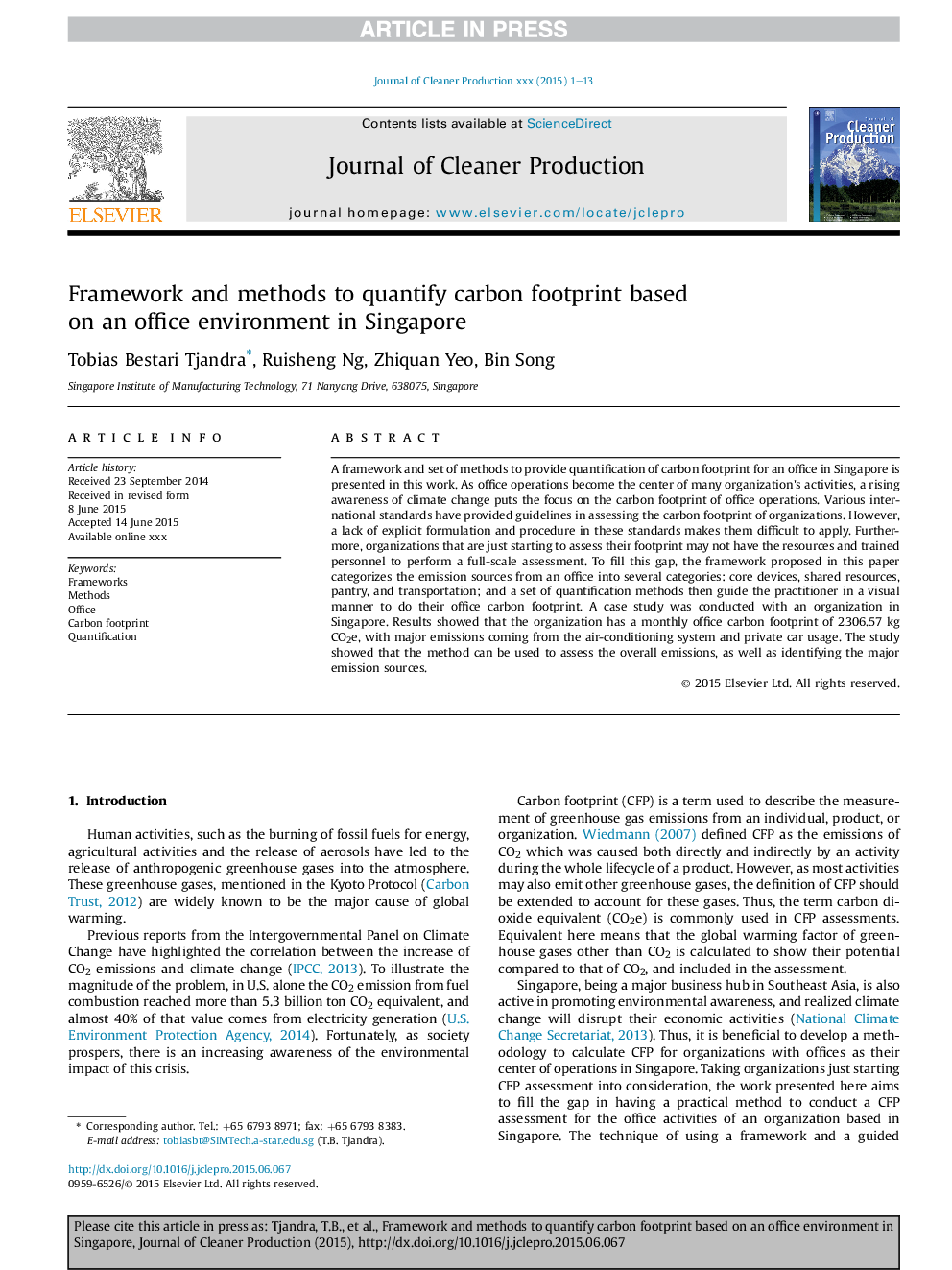| Article ID | Journal | Published Year | Pages | File Type |
|---|---|---|---|---|
| 10687961 | Journal of Cleaner Production | 2016 | 13 Pages |
Abstract
A framework and set of methods to provide quantification of carbon footprint for an office in Singapore is presented in this work. As office operations become the center of many organization's activities, a rising awareness of climate change puts the focus on the carbon footprint of office operations. Various international standards have provided guidelines in assessing the carbon footprint of organizations. However, a lack of explicit formulation and procedure in these standards makes them difficult to apply. Furthermore, organizations that are just starting to assess their footprint may not have the resources and trained personnel to perform a full-scale assessment. To fill this gap, the framework proposed in this paper categorizes the emission sources from an office into several categories: core devices, shared resources, pantry, and transportation; and a set of quantification methods then guide the practitioner in a visual manner to do their office carbon footprint. A case study was conducted with an organization in Singapore. Results showed that the organization has a monthly office carbon footprint of 2306.57Â kg CO2e, with major emissions coming from the air-conditioning system and private car usage. The study showed that the method can be used to assess the overall emissions, as well as identifying the major emission sources.
Related Topics
Physical Sciences and Engineering
Energy
Renewable Energy, Sustainability and the Environment
Authors
Tobias Bestari Tjandra, Ruisheng Ng, Zhiquan Yeo, Bin Song,
